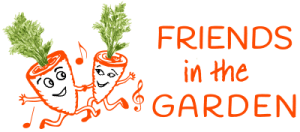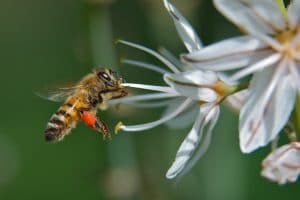
It looks like pure chaos. Honey bees are bustling in the hive as if acting out a busy Manhattan street scene. Bees are moving in every direction, fast-paced but not seeming to go very far. What is really happening? Well one thing that’s happening is one or more of those bees is doing a dance to tell its hive mates where to find the pollen.
The dance is known as “the waggle”. A perfect name for the movement. What a dancing honey bee does is move in a figure-eight
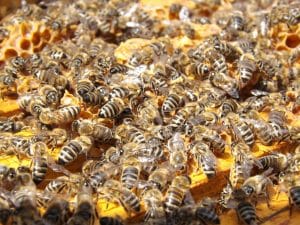
pattern, quickly walking the outside curves of the “eight” and wiggling its body across the diagonal of the “eight”. How this hasn’t made it to TikTok is beyond me.
There are several good YouTube videos that show the honey bee waggle in action. I will add a link in a bit. First, I want you to understand more about the waggle. It’s fascinating.
The honey bees have to determine the angle of the sun to the hive. They can do this whether or not they can actually see the sun. Honey bees have the ability to detect and assess polarized ultraviolet light in the sky. Human eyes are generally not able to detect ultraviolet light or those kinds of wavelengths, but honey bees are naturally equipped with that capability. So on a cloudy day or when flying to a food source in shadow, the honey bee can still calculate the position of the sun relative to the hive. Polarization.com has more detailed information on this scientific marvel.
Honey bees might fly 2-3 miles away from the hive if necessary, to find a food source. It can be sunny or cloudy and they can still
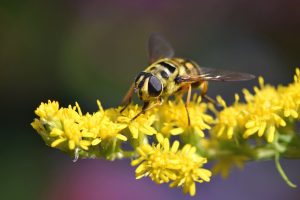
communicate the direction of the pollen source based on the sun’s angle to the hive. And, they are able to adjust their dance so that the angles stay accurate whether they are waggling vertically on the comb in the hive or horizontally. I’m so glad I’m not a honey bee and no one has to rely on me for directions to the food!
Typically, only some of the honey bees, the foragers, leave the hive to find the food source. They return to the hive once they’ve found the pollen, and communicate directions to the worker bees through the waggle dance. Then, with the necessary
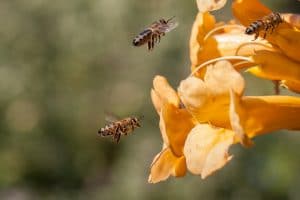
directions and angles in mind, the worker bees will take off for the pollen source. The expression “busy as a bee” refers to the fact that a worker bee can spend around ten hours each day gathering pollen and nectar. According to a paper published by Cornell University, it takes “nectar from about 5 million flowers to make one pound of honey and one pound of honey to make about two ounces of wax”. Click that link if you want to go deep into the biology of honey bees. It describes fascinating aspects of honey bees in detail – polarization, the way they see colour and shapes, everything about bee vision and the waggle.
The waggle dance seems pretty straightforward if the dancing honey bee is on a horizontal surface. They waggle in the direction of the pollen source using the sun’s position as a reference. But they are able to assess and communicate the distance and directions to a food source while accounting for variables such as wind and gravitational force and they adjust the dance throughout the day to account for the movement of the sun. Forager bees have to translate this information to the worker bees in the hive where it’s dark, the worker bees cannot see the sun and have to rely on accurate directions from the forager bees. The waggle also gives the worker bees information about the sweetness of the food source. I think it’s pretty funny that the waggle part of the dance is longer and done with more energy when the food source is a sugary one. Yeah, sugar does that to me, too!
Watch this short video to see the honey bee waggle in action.
FREE COLOURING PAGES
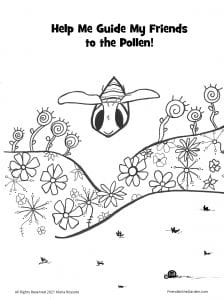
Now that you know so much more about honey bees and their quest for pollen, you can share that knowledge with your kids. Here’s the FitG Honey Bee Waggle Colouring Pages I made just for you to share with them. They’re a great way to get the conversation going while relaxing and sharing quality time.
If you want some inspiration and maybe to dance and sing a little before sitting down to colour, here’s the perfect video for you: Beez Beez
I hope you are even more excited now about honey bees. We’ve only skimmed the surface of these fascinating creatures. Until the next time we explore them, would you be willing to plant some pollinator attracting plants in your garden or in a pot on your patio? Or maybe visit your local farmer’s market to purchase some locally produced honey? The bees say “Thank you!”.
Ok, now get outside and play 😀,
XOXO Maria
